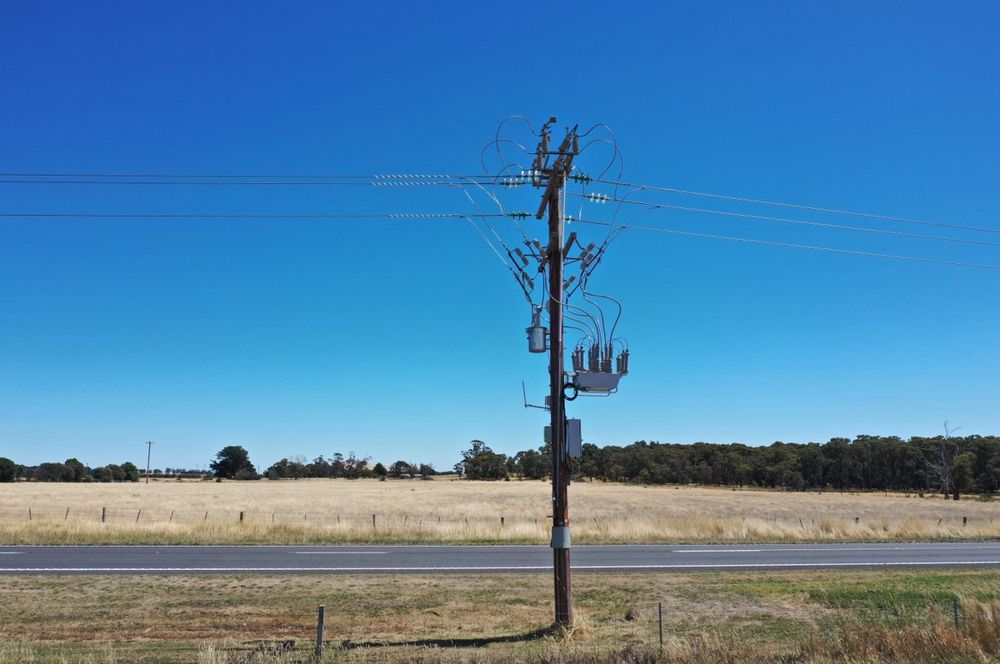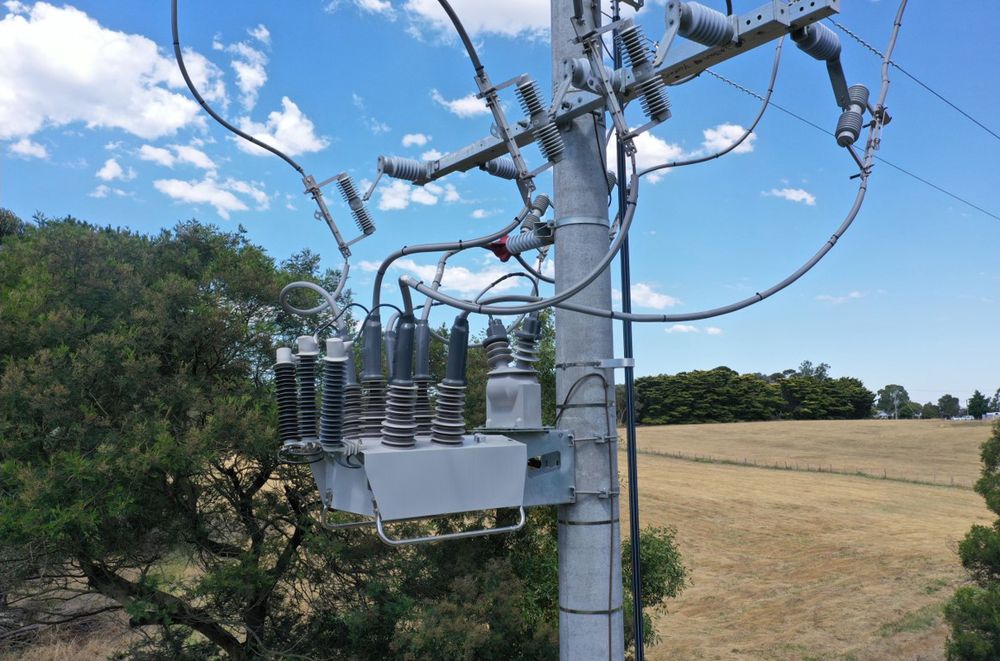Technical Article
Published 05/2024
Broken Conductor Detection with the NOJA Power OSM

Broken conductors can be a dangerous electricity distribution network fault scenario. Unlike overcurrent or earth fault scenarios which often generate excess currents, broken conductors may remain isolated from earth but exposed in a compromised position.
Most distribution networks worldwide employ both Overcurrent and Earth Fault protection to detect excess current scenarios or asymmetric faults connecting to earth. However, if an overhead line breaks and remains hanging in the air, neither overcurrent nor earth fault will detect this broken conductor scenario.
Fortunately, there are multiple features in NOJA Power’s OSM Recloser system that allow improved detection of this fault scenario.
Negative Phase Sequence Protection
Negative Phase Sequence overcurrent protection is an electrical protection method that uses an algorithm to convert the measurements taken on a three wire overhead distribution system into a representation of imbalance.
While overcurrent protection works on the magnitude of current, negative phase sequence looks for the difference between the three phases, that is not accounted for by earth plane losses.
A healthy feeder has almost zero negative phase sequence current. But In the case that an overhead line breaks, that phase will carry less current than the other remaining phases. This introduces an imbalance, that will emerge as a non-zero value for negative phase sequence current.
NOJA Power’s OSM Recloser system with RC Series control has Negative Phase Sequence overcurrent protection included as standard. Protection engineers can use this feature to detect imbalance and protect against broken conductors.

ANSI 46 BC Broken Conductor Protection
Building on the Negative phase sequence overcurrent protection, ANSI 46 BC takes the ratio between the positive sequence (balanced) current and the negative sequence (unbalanced) current.
This is the ratio of “I2” divided by “I1”, or NPS divided by balanced current.
Since a healthy feeder should have near zero NPS current, protection engineers expect this value to remain low.
If a line breaks, introducing imbalance, this ratio will quickly exceed 20%, provided that there are limited line to line loads connected between the protection device and the source.
I2/I1 protection reduces the need for protection engineers to know the negative phase sequence impedance of an overhead line, and rather provides a significant additional sensitivity to broken conductors.
Industry practice commonly sets an alarm at 20% I2/I1 ratio, prompting a line patrol to inspect for broken conductors.
While it may not capture every case, it provides sensivity to many cases that would be missed by using an Overcurrent and Earth Fault protection strategy alone.
Voltage Sag Protection
Dubbed “UV4” in NOJA Power’s OSM Reclosers, Voltage sag protection attempts to differentiate between floating phase discontinuities and high impedance earth faults to detect broken conductors.
Unlike the other undervoltage elements in the NOJA Power OSM Recloser system, UV4 can be configured to operate “phase to ground”.
By reading the phase to ground voltage on all terminals of the OSM Recloser, this protection aims to differentiate between a floating phase discontinuity (such as a blown fuse or line bridge), and a conductor resting on the earth.
A recloser that is downstream of a blown bridge or fuse that remains insulated from earth will see an undervoltage on the phases with the discontinuity, as the faulted phase remains energised by backfeed through the transformer at the end of the line.
However, if the line is broken and resting at earth potential, the voltage would be lower, and is a function of the impedance between the recloser terminals and the earthed conductor.
By understanding the difference in voltage profile, the undervoltage will land either below or above this midpoint threshold. This gives operators further information to decide whether it is a blown bridge or blown fuse fault.

Conclusion
NOJA Power’s OSM Recloser offers multiple methods for detecting broken conductors on the overhead distribution network.
“Broken conductor protection is not often utilized on distribution networks but you can see from the options available in our complete range of RC controllers it can easily be implemented when developing protection settings for your future recloser installations and significantly increase safety on your network as a result,” says NOJA Power Group Managing Director Neil O'Sullivan.
All these functions are available as standard in the NOJA Power OSM Recloser system. Earlier versions of NOJA Power’s RC-10 control can also be firmware upgraded to unlock these additional features.
For more information, visit www.nojapower.com.au or contact your local NOJA Power Distributor.
Want to stay up to date with Electrical Distribution Technology?
Join our list for a free weekly technical bulletin, as we share our Global Electrical Engineering experience directly to your inbox.
Subscribe →